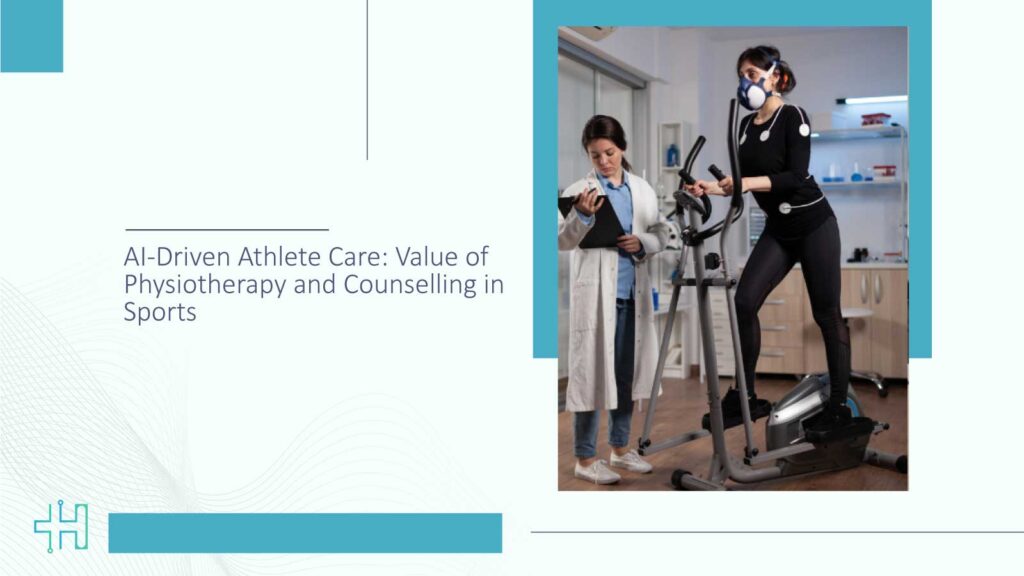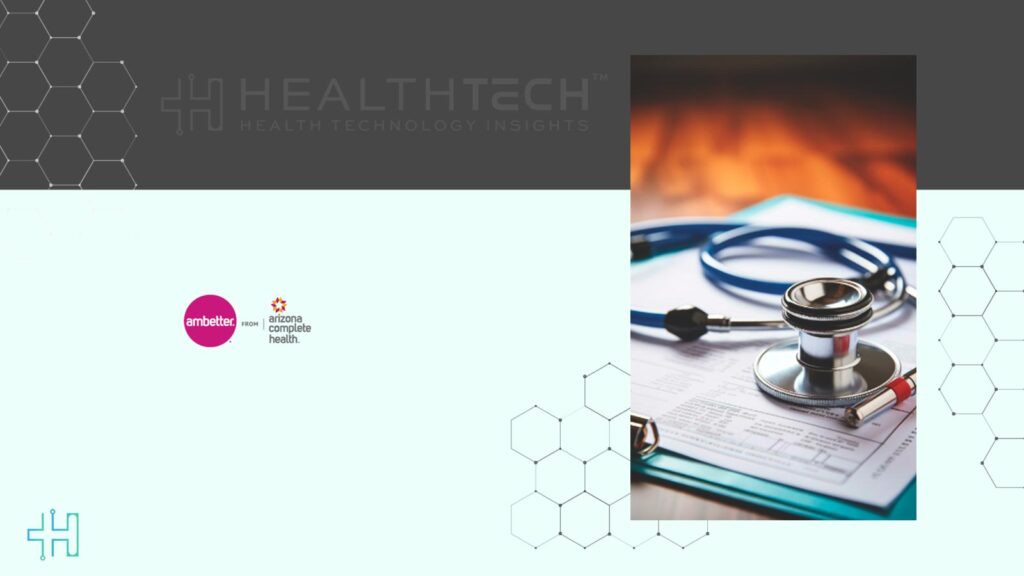For decades, hospital food has had a reputation no one is proud of. If you ask people what comes to mind, you’ll hear the same things: bland, boring, colorless trays of reheated vegetables and overcooked rice. The kind of food you eat because you have to, not because you want to. And for patients who are already physically and emotionally drained, meals like these don’t just disappoint – they can discourage appetite, slow recovery, and worsen the overall hospital experience.
But that old picture is finally beginning to change.
Around the world, hospitals are starting to recognize something simple but profound: food is not just calories, it is care. What patients eat can influence inflammation, energy levels, mood, gut health, immune response, and ultimately, how well and how quickly they heal. And now, chefs, real chefs, with culinary training and a deep understanding of flavor, culture, and comfort, are stepping into hospital kitchens to design meals that are nourishing and enjoyable.
This revolution isn’t just about taste. It’s about clinical outcomes, patient dignity, and long-term health. And in many leading hospitals, it’s being supported by technology from AI-based menu personalization to smart kitchen systems that track nutrition, sourcing, and waste. The result? A new model of healthcare where meals are part of treatment, not an afterthought.
The Old Hospital Menu Problem
If you’ve ever eaten in a hospital, you already know the issue. For decades, hospital food was designed around cost efficiency and logistical convenience, not health outcomes or patient experience. Large trays were prepared in bulk, stored for hours, reheated, and served with minimal attention to flavor or texture. The priority was to feed patients something, not necessarily something that supported healing.
This approach stemmed from a long-standing medical belief that nutrition was a background factor, secondary to medications, surgeries, and procedures. Food was categorized as a basic need, not a clinical tool.
But the consequences of this mindset were real:
- Patients left meals uneaten
- Malnutrition risks increased in vulnerable patients
- Recovery slowed due to poor nutrient intake
- Hospitals saw more waste, more cost, and lower satisfaction scores
How Bland Food Impacts Healing More Than We Realize
When someone is ill, their relationship with food becomes more fragile. Taste changes due to medication. Appetite drops. Digestion can become strained. Emotional comfort becomes just as important as nutritional content.
If the food served feels unappealing – visually, aromatically, or culturally – patients simply don’t eat enough to support healing. And research is increasingly clear: nutrient density, protein intake, and gut-friendly foods play a direct role in tissue repair, immune response, and inflammation control.
So while a bland, “nutritionally correct” meal might look fine on paper, if it’s not eaten, it’s not helping. This realization sparked the shift.
The Mindset Shift: Food as a Clinical Intervention
In the last five years, healthcare has seen an undeniable movement toward lifestyle-based treatment. With chronic conditions (diabetes, hypertension, obesity, heart disease) rising globally, the clinical world is acknowledging a reality patients have known for generations: what we eat every day shapes our health outcomes. Hospitals are now treating food the way they treat medication with intention.
Why Doctors Are Talking About Nutrition Again?
Until recently, medical training included very little nutrition education. But as lifestyle diseases increase and readmission rates become a financial burden, health systems are being pushed to look beyond prescriptions and procedures. Diet isn’t a “nice to have” anymore – it’s a measurable, impactful part of treatment.
Doctors are now asking questions like:
- What should my patient eat to reduce inflammation?
- How do we help a diabetic patient stabilize glucose through meals?
- How do we support gut healing after surgery or antibiotic treatment?
This shift opened the door for culinary medicine, where chefs and dietitians collaborate directly with clinicians to design meals that are:
- Fresh
- Nutrient-dense
- Culturally familiar
- Flavorful
- Easy to digest
- And aligned with the patient’s condition
Food becomes a prescription. The kitchen becomes part of the clinic. And the patient becomes an active participant in their own recovery.
When Chefs Enter the Care Team
When a chef walks into a hospital kitchen for the first time, the shift is immediate. The conversations change. Instead of focusing on inventory counts and tray distribution times, the focus turns to flavor, freshness, and connection.
Chefs ask different questions:
- What spices would make this comforting?
- What does this dish smell like when it arrives at the bedside?
- Would someone’s grandmother recognize this meal?
They bring an understanding that food is emotional.
It can soothe. Energize. Reminds you of home.
And when you’re in a hospital – possibly scared, weak, or grieving that emotional comfort matters more than ever.
In many hospitals adopting culinary medicine, chefs don’t work alone. They collaborate with dietitians, physicians, and cultural liaisons to create meals that feel familiar and healing. For example:
- A patient from South India recovering from surgery might receive light rasam with warm rice instead of plain broth.
- A patient with nausea might receive ginger-infused teas and easily digestible soft grains.
- Pediatric meals may include fun colors and shapes to encourage children to eat joyfully, not reluctantly.
These aren’t indulgences – they’re care strategies. When a patient eats well, they regain strength. When they feel cared for, they heal more fully.
The Role of Technology: Personalized Nutrition at the Bedside
This shift isn’t happening through human intuition alone – technology is quietly playing a powerful role. Hospitals are now using:
- AI-based menu personalization systems that adjust meals based on medical conditions, allergies, gut tolerance, and even flavor preferences.
- Smart kitchen software to track nutrient density, protein counts, and sodium control in real time.
- Digital patient meal apps, where a patient can choose meals from their bed (with clinical guardrails built in).
Imagine this experience:
A patient recovering from heart surgery opens a bedside tablet. They choose meals based on what feels comforting, while the system automatically ensures every selection meets cardiac-safe nutritional guidelines. No guesswork. No confusion. No overwhelm.
For patients who may already feel like so much is out of their control, being able to choose what they eat is a small but deeply empowering form of dignity. And when people feel dignified, they heal differently.
Measuring Healing Beyond the Plate
The most beautiful part of this movement? Hospitals aren’t just improving meals – they’re improving the patient experience of being cared for. And the impact is measurable:
- Patients are eating more of their meals
- Strength and energy levels improve faster
- Length of stay can decrease in some cases
- Patient satisfaction scores rise – often dramatically
- Families feel reassured knowing their loved one is nourished, not just treated
But beyond the numbers, the stories speak louder:
A cancer patient saying, “The food was the only part of my day that felt normal.”
A child smiling because dinner looked like something they’d eat at home.
A recovering elder whispering, “This soup tastes like my village.”
Hospital meals are no longer just trays of food. They are moments of care. And sometimes, one good meal is the first step toward hope.
Smart Hospital Kitchens: Automation, Precision, and Safety
As hospitals rethink food, the kitchen itself is evolving – not just the menu. Modern hospital kitchens are beginning to look less like cafeterias and more like precision-driven culinary labs. Technology helps ensure that every meal is not only flavorful, but also clinically safe, nutritionally consistent, and cost-efficient.
Digital Kitchen Management Systems
These systems track:
- Exact nutrient profiles of every ingredient
- Allergens and allergy risks
- Food temperature and storage safety
- Portion sizes and calorie counts
- Inventory expiry and waste
What this does is remove guesswork. If a patient is on a low-sodium renal diet, the software ensures the kitchen cannot accidentally add food beyond the allowed threshold. The recipe updates automatically, and the meal is adjusted to meet clinical specifications – without sacrificing taste.
Predictive Cooking and Waste Reduction
Smart systems forecast:
- How many meals will be needed
- Which ingredients are most used
- Which items are usually left uneaten
This eliminates the problem of mass-prepped trays that no one finishes, a common issue in hospitals around the world. Less waste means:
- Lower operational costs
- Fresher ingredients are purchased more frequently
- Meals made closer to serving time (which improves both nutrition and flavor)
Technology, in this case, is not replacing human touch – it is making room for it. When automation removes routine, repetitive work, chefs and dietitians can focus on what truly matters: cooking with care.
AI + EHR Integration: Real-Time Meal Adjustments
Perhaps the most transformative shift is happening behind the scenes – in how food communicates with medical records. Today, many hospitals are integrating meal planning systems with Electronic Health Records (EHRs). This means a patient’s:
- Diagnoses
- Lab results
- Allergies
- Fluid restrictions
- Medication interactions
…all automatically guide what meals they can and should receive.
Real-Life Example
If a patient’s blood potassium spikes unexpectedly, the system immediately updates meal options to reduce potassium-rich ingredients. If a patient is suddenly placed on NPO (nothing by mouth) before a procedure, the kitchen is notified instantly – preventing errors and discomfort. No phone calls, manual paperwork delays. The meal plan adjusts in real time – gently, silently, safely.
AI Personalization Layer
AI adds something even more meaningful: human understanding. Beyond clinical needs, AI considers:
- Taste preferences
- Cultural food identity
- Texture and chew comfort levels
- Emotional eating needs (e.g., soft, warm foods for nausea)
So meals are not just correct – they are comforting. This is where healing deepens. Patients begin to feel seen. And being seen is sometimes the first step toward feeling well.
Teaching Kitchens: Preparing Patients for Life After the Hospital
Healing doesn’t end when a patient is discharged. In fact, what happens after the hospital often determines whether a person continues recovering or returns. This is why many hospitals are introducing Teaching Kitchens – spaces where patients and families learn how to nourish themselves beyond the clinical setting.
What Happens in a Teaching Kitchen?
Patients learn:
- How to prepare meals that support their diagnosis
- How to read ingredient labels without confusion
- How to replace processed snacks with nourishing alternatives
- How to flavor food deliciously without excess salt, sugar, or oil
- How to make meals that are comforting – not restrictive
Sessions are often hands-on, friendly, and welcoming – not lecture-style. There may be:
- Gentle cooking demonstrations
- Culturally familiar recipes adapted to healing needs
- Simple knife skills for beginners
- Small grocery budgeting guides
- Taste-first recipes to show healthy food can still be joyful
The Emotional Side
When a patient learns to cook after illness, something powerful happens. They regain agency. They move from feeling treated to feeling capable. They stop seeing food as rules and restrictions and start seeing it as a resource, a comfort, a daily act of care.
Virtual Learning for Wider Reach
Some hospitals extend these lessons through:
- Online classes
- Short video demos
- Nutrition teleconsults
- Patient community cooking clubs
This ensures that even when patients go home, they are not alone.
Cultural Food Integrity: Respecting Identity in Healing
One of the most meaningful parts of the culinary medicine movement is the shift toward respecting cultural food identity. Food is deeply personal. It carries memory, family, and belonging. When a patient is hospitalized, they can feel disconnected from everything familiar. Something as simple as rice cooked the way they grew up eating it can be grounding.
Many hospitals now work with:
- Cultural dietitians
- Community culinary advisors
- Patient family feedback groups
The goal is not to create a menu that tries to please everyone at once. The goal is to ensure everyone can see themselves on the menu. If a patient from Kerala is recovering from surgery, serving bland oatmeal may feel foreign and unwelcoming.
However, serving a light, warm kanji or mildly spiced dal may bring comfort and familiarity, while still meeting health needs. This approach is not only about taste. It is about dignity. When a hospital honors the foods that shaped a person, they honor the person themselves. Healing begins there.
The Economics: Why Better Food Lowers Cost of Care
Hospital leaders sometimes worry that improving food quality will increase cost. But the real picture is the opposite. When patients eat better:
- Recovery time may be shortened
- Strength improves more consistently
- Medication needs can shift
- Readmission risk may decrease
- Patient satisfaction scores rise significantly
Higher satisfaction can directly influence hospital ratings and reimbursement. Lower readmission rates reduce financial strain. More efficient kitchen systems reduce waste and purchasing inefficiencies. One study from The Culinary Medicine Institute found that hospitals using chef dietitian collaboration models reported:
- A reduction in plate waste
- Improved patient nutrition intake
- Higher patient experience ratings
Better food is not a luxury. It is a clinical investment in healing outcomes. When patients feel nourished, they have more energy. When they have more energy, they participate more fully in recovery. This is where cost and care align.
Real Case Stories: Hospitals Leading the Change
Boston Medical Center, United States
Boston Medical Center is one of the clearest examples of a hospital redefining food as part of treatment. They operate a rooftop farm that produces fresh seasonal vegetables. These ingredients go directly into patient meals, cafeteria offerings, and community food support programs.
They also run a Teaching Kitchen program where patients with conditions such as diabetes and hypertension learn how to cook meals that support their health after discharge. It is not just about meeting dietary restrictions. It is about building confidence and comfort in the kitchen. This approach has helped many patients maintain recovery progress at home, not just in the hospital.
AdventHealth, United States
AdventHealth has invested deeply in culinary medicine as a prevention-focused care model. Their wellness campuses include gardens, demonstration kitchens, and nutrition education centers where patients learn to prepare meals that are satisfying and healing at the same time.
Their programs emphasize long-term sustainability. Patients do not just receive a meal plan. They learn how to translate it into everyday life using familiar foods, gentle cooking methods, and realistic daily routines.
UCLA Health, United States
At UCLA Health, dietitians and chefs collaborate to design menus based on individual medical needs, cultural preferences, and personal comfort. UCLA also uses digital menu systems that connect directly with electronic health records. This ensures that if a patient’s clinical needs change, their meal plan changes safely and immediately.
Patients report feeling more in control and more cared for. Families often express relief knowing nutrition is part of the care plan, not an afterthought.
FAQs
1. What is culinary medicine in hospitals?
Culinary medicine is an approach where food is used as part of a patient’s treatment plan. Chefs and dietitians work together to create meals that support specific medical conditions while still being flavorful and comforting. The idea is that food should nourish both the body and the emotional experience of healing.
2. Why are hospitals bringing chefs into the care team?
Chefs bring expertise in flavor, presentation, and food enjoyment. When food tastes good, patients are more likely to eat well. Better eating supports faster healing, improved energy levels, and better recovery outcomes. Chefs help transform hospital meals from basic nutrition into a meaningful part of care.
3. How does technology help with hospital meal planning?
Hospitals use digital nutrition software, AI menu systems, and electronic health record integrations to personalize meals for each patient. These tools ensure meals match clinical requirements like sodium limits, allergy restrictions, and calorie goals while still allowing patients to choose foods they enjoy.
4. Do personalized hospital meals cost more?
Not necessarily. While the shift requires planning and kitchen upgrades, hospitals that adopt culinary medicine often see lower food waste, improved patient outcomes, and shorter recovery times. This can reduce overall treatment costs and improve hospital performance scores.
5. What is a Teaching Kitchen?
A Teaching Kitchen is a space where patients and families learn how to prepare simple, healthy meals that support long-term well-being. Patients practice cooking techniques, learn how to adjust everyday food choices, and build confidence in taking care of themselves after discharge.
Dive deeper into the future of healthcare – Keep reading on Health Technology Insights.
To participate in our interviews, please write to our HealthTech Media Room at sudipto@intentamplify.com








